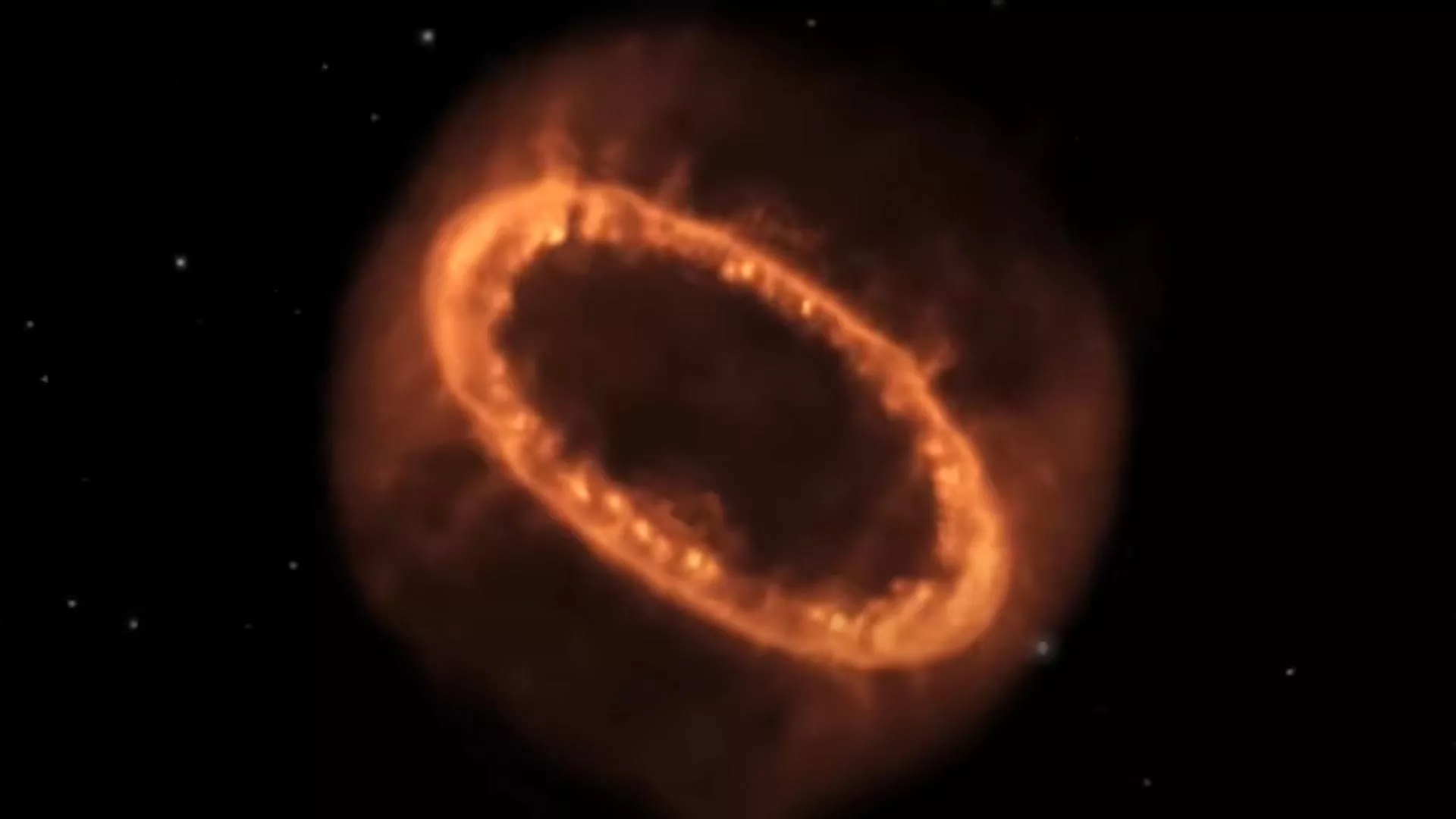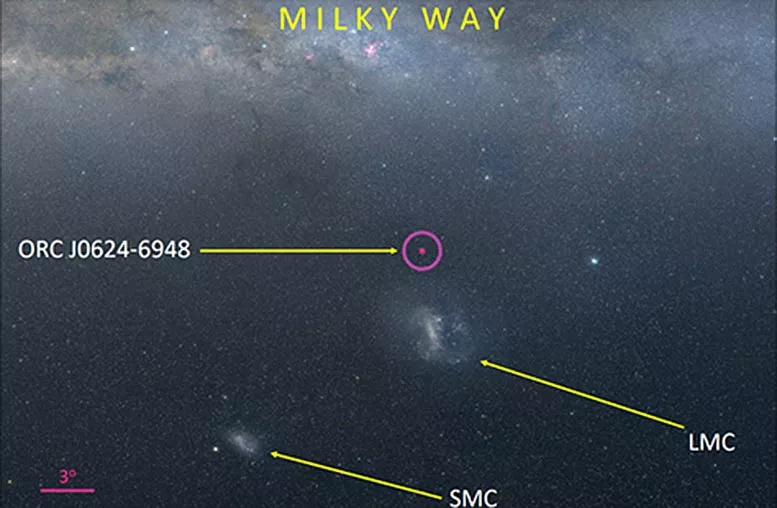*Researchers at the University of Western Sydney, together with an international team of experts, found a mysterious ring near our nearby galaxy, which may be the first known case of intergalactic supernova remnants * - the remains of an exploding star that may be 7000 years old.

Scientists call it a "rogue" supernova remnant and name it j0624-6948. It is likely to be located in the Large Magellanic Galaxy (LMC), a satellite galaxy of the Milky way, and its location indicates a previously unobserved origin.
Professor Miroslav Filipovic, the first author of the study, said the discovery was exciting and raised many unsolved mysteries.
"When we first found this almost perfect circular radio object, we thought it was another Orc (strange radio ring), but after we made additional observations, it was clear that the object was more likely to be something else," he said
The ring found is significantly different from the other five known orcs - a flatter radio spectral index, a lack of a prominent central galaxy as a possible host, and a larger surface size - all suggest that it may be a different type of object.
Professor Filipovic said: "the most reasonable explanation is that this object is an intergalactic supernova remnant, which was caused by an exploding star living on the outskirts of the great Magellanic Cloud, which experienced a single retreat type Ia supernova explosion. However, we considered other situations, such as that this object may represent a nearby galactic star (only 190 light-years away from the sun) The remnants of superflare activity that occurred centuries ago, or it may actually be a larger ORC. So what we might find is a unique supernova remnant that has expanded into a thin intergalactic environment - an environment we didn't expect to find in such an object. Our estimates indicate that their age is about 2200 to 7100 years. "

J0624-6948 was first detected by the Australian square kilometer array Pathfinder managed by CSIRO. It is one of several new generation radio telescopes that reveal the new characteristics of the universe.
"These new radio telescopes can capture a range of spherical objects, which are enriching our understanding of the universe due to the combined effects of high sensitivity, good spatial sampling and extensive regional coverage," Filipovic said.